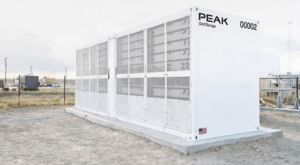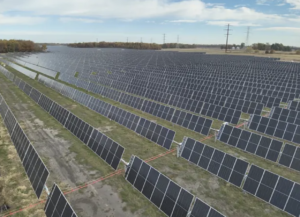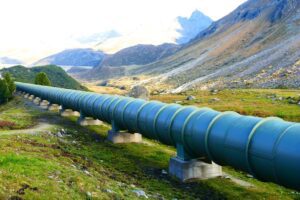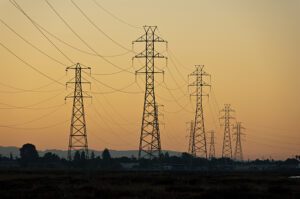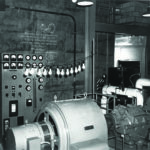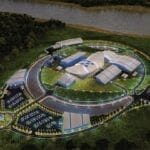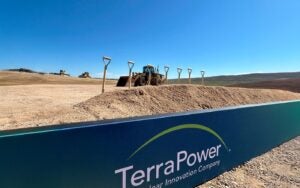
I’m lucky to learn firsthand about some of the world’s most cutting-edge technologies. I’ve seen artificial intelligence ace an AP biology test, long before AI became an everyday tool. I’ve seen genetically modified mosquitoes that stop malaria in its tracks. I’ve seen geothermal wells that go 15,000 feet below the surface of the earth.
But if I had to pick the coolest thing I work on, it’s hard to beat harnessing the power of atoms to fuel our world.
Understanding Nuclear Energy Fundamentals. Get a comprehensive overview of nuclear energy basics before diving into the specific technologies Gates discusses below.
Both fission energy and fusion energy release large amounts of energy by altering the nucleus of an atom. Fission already provides safe, reliable, clean electricity around the world, and I believe that fusion will too one day soon. And both will play a key role in meeting humanity’s growing need for energy while also eliminating carbon emissions
The two technologies often get lumped together, which is understandable given how similar they seem on the surface. But the reality is that, in many ways, fission and fusion are opposites. Knowing how each one works—and why they are different—is critical to understanding the roles they will play in the decades ahead.

How Fission Works
When people talk about “nuclear power,” they are almost always talking about fission. Fission has been powering homes around the world since 1954 (the year before I was born!). Although the technology has evolved a lot over the years—and continues to improve, as I’ll explain—the fundamental physics remains the same.
The nucleus of every atom is made up of subatomic particles called protons and neutrons. Some atoms, like uranium-235, have unusually large and heavy nuclei that make them unstable. If you fire a neutron at a uranium-235 atom, its nucleus breaks apart into smaller atoms—releasing energy in the form of heat. (The amount of energy released is enormous: the change in the mass of the atom times the speed of light squared. You may know this as E=mc2.)
As the nucleus splits, it also releases its neutrons. These neutrons bounce around at incredible speeds until some eventually collide with other nuclei. This sets off a chain reaction as each collision results in the release of more heat and more neutrons.
The heat created by this chain reaction is harnessed to turn water into steam. The steam is then used to turn turbines, which convert the motion into electricity. This power is sent via the power grid into homes and businesses—all without releasing any harmful emissions into the atmosphere.
These steps form the backbone of all fission power, but beyond the core reaction, there are lots of different ways to build a nuclear power plant. Most use pressurized water to keep the core at a stable temperature. Others use carbon dioxide gas or something called heavy water. TerraPower, the nuclear company I started back in 2008, uses liquid sodium.
Inside TerraPower’s Natrium Reactor Technology. See how TerraPower’s innovative sodium-cooled reactor design addresses the safety and efficiency challenges Gates describes.
I first became interested in fission twenty years ago when I asked a couple of my smart physicist friends if there was a better way to build nuclear power plants. Nuclear has lots of advantages, but it has some challenges: The plants are expensive to build, and human error can cause accidents. We need next-generation nuclear technology that solves these problems, which is where TerraPower fits in.
The company’s Natrium reactor is far safer than any existing plant, with the temperatures held under control by the laws of physics instead of human operators who can make mistakes. It has a shorter construction timeline, is cheaper to run, and can be operated by former fossil plant workers with minimal retraining. And, when the plant comes online in 2030, it will be reliable, providing dependable power throughout the day and night.
Fission energy is a well-established technology that we’re trying to improve. In contrast, generating electricity from fusion is something totally new.
How Fusion Works
While fission is all about splitting atoms, fusion is all about combining them. Fusion is the reaction that powers the sun and stars, but it has been a decades-long challenge to reproduce those intense conditions here on Earth. Now it’s within reach for reasons I will explain, but first, you need to understand how fusion works.
You start with a simple gas like hydrogen. If you make it extraordinarily hot while it’s in an electrically charged state known as plasma, the particles start moving so fast that they hit one another and fuse together.
When the hydrogen atoms fuse, they become helium. In the process, they release a great deal of heat. This reaction is what powers the sun, and it can be used to turn water into steam that pushes a turbine and generates electricity.
The challenge is getting the hydrogen particles hot enough to fuse. Because the sun is so large, the gravitational pressure in its core creates temperatures around a mind-blowing 15 million degrees Celsius. Here on Earth, one way to reach the right temperatures is by containing the plasma inside a magnetic field—although this is hard to do without using more energy than you generate. Scientists are experimenting with different kinds of devices, including the donut-shaped tokamak and the twisted spiral stellarator.
Once a fusion reaction is up and running, it’s totally safe. There’s no chain reaction to run out of control, because the fusion ceases as soon as you stop supplying fuel or switch off the device that’s containing the plasma. (Fun fact: Fusion machines are regulated as the same class of technology as MRI machines.) Plus, the fuel is cheap and plentiful. The two types of hydrogen that are used are extracted from sea water and created inside the fusion machine itself.
Researchers have been chasing the dream of commercial fusion power generation since the 1950s. Although they learned a ton about the science in the process, fusion power remained elusive—until 2022. That’s when scientists at Lawrence Livermore National Laboratory in California achieved what is called “ignition”: the moment when heat from the fusion process helped sustain the reaction, a key step toward commercial fusion energy’s requirement of releasing more energy that was put in.
In just three years since then, the race to commercialize fusion energy has sped up. Commonwealth Fusion Systems, a company I support through Breakthrough Energy, is the farthest along: They’re on track to put power on the grid in the early 2030s using their tokamak called ARC, which is compact and uses high-temperature superconductors to create the magnetic field. Other companies making terrific progress include Marathon Fusion, Type One Energy, Xcimer, and Zap Energy.
Commonwealth Fusion Systems: Leading the Fusion Race. Take a closer look at the fusion technology and facilities that Gates believes will power our future.
It’s great to see so many companies trying different approaches to fusion energy. As those designs come out, we’ll have to see which the cheapest way is to generate the heat that you turn into electricity. The more designs we have that work, the more likely it is we’ll be able to lower the cost of electricity significantly compared to today.
These Energy Sources Could Change Everything
Today, 9 percent of the world’s electricity comes from nuclear power plants. That electricity is entirely generated through fission, since fusion energy isn’t online yet. By 2050, however, I think both fusion and next-generation fission power will make up a much more significant chunk of the energy portfolio.
The first TerraPower plant is currently being built in Kemmerer, Wyoming. Many of the facilities’ support buildings are well underway, and construction is about to begin on the “energy island,” where the steam turbines and other machinery that generate power will sit. The Nuclear Regulatory Commission is currently reviewing the company’s application to start on the actual nuclear reactor. I’m hopeful that we’ll start building the “nuclear island” next year, ahead of the plant coming online in 2030. And once the first plant is up and running, it’ll be much faster and cheaper to build additional plants.
Fusion power is a bit further away but still coming in the near-term future. CFS expects to see its SPARC prototype demonstrate net fusion energy within the next two years. They’ve secured the site of their first power plant in Chesterfield County, VA, and they’ve already got signed two major customers: Google and Eni, an Italy-based global energy company. I’m optimistic the ARC power plant will come online within the next decade. When that day comes, it will be a huge win for America’s energy independence—and for the world’s quest for abundant sustainable energy.
Consider this: If you know how to build a fusion power plant, you can have unlimited energy anywhere and forever. It’s hard to overstate what a big deal that will be. The availability and affordability of electricity is a huge limiting factor for virtually every sector of the economy today. Removing those limits could be as transformative as the invention of the steam engine before the Industrial Revolution.
This transformation will dramatically improve human welfare around the world—and especially for the world’s most vulnerable people. Making cheap electricity is super important. If you don’t have power, there’s a real limit to how much you can develop economically. As crazy as it seems now, I believe that we will one day be able to put fission and fusion power plants in the most remote parts of the world.
The biggest challenge is, as with all technology development, building the first one. Once you’ve proven that your concept works, it is exponentially easier and cheaper to build the second plant, and then the third plant, and so on. Eventually, the price of electricity will come down even below the cheapest way we make electricity today.
Both fission and fusion are fundamental technologies for humanity to power everything we do. We’re on the cusp of massive breakthroughs, and it’s clearer now than even before: The future of energy is subatomic.
—Bill Gates, Chair, Bill & Melinda Gates Foundation

